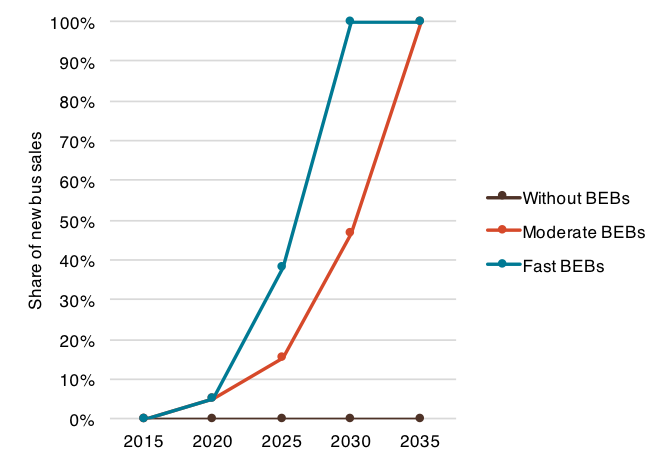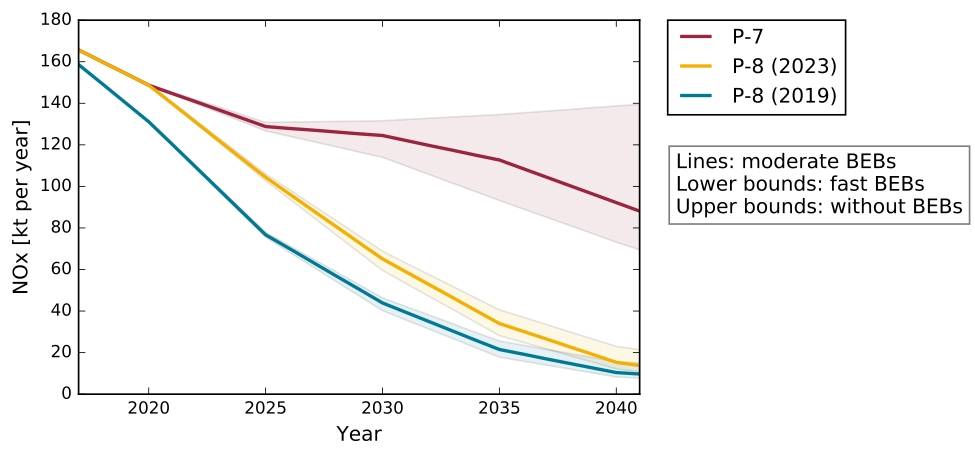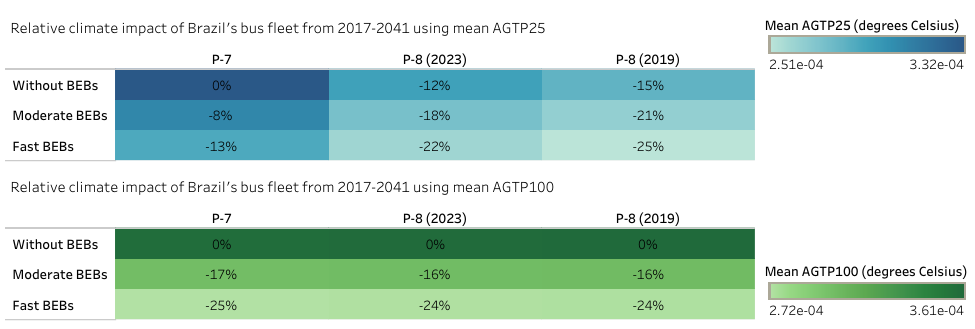Blog
Zero emission buses are worth reaching for, but emission performance standards are the low-hanging fruit
Sales of battery electric buses (BEBs) are surging in major cities around the world. Los Angeles, California committed to shift its 2,200 bus fleet to zero-emission buses (including BEBs) by 2030, while Shenzhen, China has already committed to a 100% zero-emission bus fleet and is expected to reach this target by the end of 2017.
The enormous demand for BEB technologies is not surprising, given their benefits: zero tailpipe emissions of air pollutants and climate pollutants, reduced noise, and the potential for life cycle cost savings with lower operating and maintenance expenditures. And it will continue, as battery costs decline further and economies of scale increase, and as mayors of C40 cities step up to further the objectives of the Paris Climate Accord.
Yet a complete technology transition won’t happen overnight. Scaling up the deployment of BEBs will require investments in charging infrastructure, coordination with utilities, and innovation in procurement, financing, and operational models. Hence, the global transition to BEBs is going to take time even under the best circumstances. Meanwhile, simply tightening emission standards on conventionally powered buses would have dramatic and immediate effects on air quality in cities where new buses are not currently required to meet world-class emission standards. To ignore the problem of lax standards because we’re distracted by the promise of BEBs is a mistake that would be paid for in many needless premature deaths.
Buses meeting world-class (Euro VI or US 2010 equivalent) emissions standards emit ~90% less fine particulate matter (PM2.5) and nitrogen oxides (NOX) than buses certified to Euro V standards. Put differently, one Euro V diesel bus emits as much PM2.5 and NOX pollution as 10 Euro VI buses‚ and an uncontrolled bus emits as much as ~100 Euro VI buses. Euro VI became the standard in the European Union in 2014, but more than 80% of new buses worldwide are sold in regions that enforce Euro V or earlier standards.
Brazil offers an informative case study of the benefits of implementing world-class emission standards. Brazil’s current emission standards are equivalent to Euro V. The national government and São Paulo’s environmental agency (CETESB) are working on a proposal for new emission standards equivalent to Euro VI. São Paulo is independently working to set legally binding targets for a fossil-free bus fleet.
Consider three hypothetical pathways for battery electric bus uptake, shown below. Sales of BEBs in Brazil could either remain at zero (without BEBs) or grow to reach 100% of new bus sales by 2030 (fast BEBs) or 2035 (moderate BEBs).

The following figure shows annual NOX emissions from Brazil’s bus fleet projected over 25 years. The solid lines show the trend in NOX emissions if new buses continue to emit at Euro V levels (P-7), versus if new buses are required to meet P-8 standards starting in 2019 or 2023. The shading around each line illustrates the variability in emissions without BEBs (upper bounds) or with faster BEB uptake (lower bounds); all three lines assume moderate BEB uptake. As shown, the NOX emission pathways for the P-8 scenarios deviate quickly from the P-7 scenarios. The variations in emissions with and without BEB uptake are quite narrow compared to the distance between the P-7 and P-8 scenarios. The key result of this exercise: the local air pollutant emission benefits of even the most ambitious BEB uptake scenario pale in comparison with swift implementation of Euro VI-equivalent standards.

The air-quality trade-offs of foregoing tailpipe emission standards can be dramatic. Battery-electric buses could reduce cumulative PM2.5 emissions by up to 12% if conventionally powered buses met Brazil’s P-7 emissions standard. But even without any BEBs in Brazilian cities’ fleets, if new buses were required to meet Brazil’s upcoming standard, P-8, that would reduce cumulative PM2.5 by up to 34%. But note that timing is important: a four-year delay in implementation would forgo 7–8% of PM2.5 benefits and 12% of NOX benefits.

What about climate impacts? Whereas Euro VI-equivalent standards nearly eliminate emissions of black carbon (BC), a short-lived climate pollutant, BEBs are among the least carbon-intensive bus technologies for all but the dirtiest of electricity grids. The following table shows the climate impacts of CO2, NOX, and BC emissions from Brazil’s bus fleet averaged over a 25-year or 100-year time horizon. A combination of Euro VI-equivalent standards and fast BEB uptake could reduce near-term climate impacts of Brazil’s bus fleet by 25%, versus only about half of that for either option independently. And over the long-term, completing the transition to BEBs is important for climate stabilization.

What we’ve illustrated for Brazil has clear implications for the P-8 timeline: to protect climate and health, these standards should take effect as soon as possible. Likewise, there are important implications for the global context. Indeed, the potential emission benefits of transitioning to zero-emission buses are significant, and it’s worthwhile for governments and financing institutions to take action to accelerate this transition. Yet, while doing so, local and national governments should not overlook the low-hanging fruit: to require all new vehicles to meet world-class emission levels, not just the zero-emission ones.
